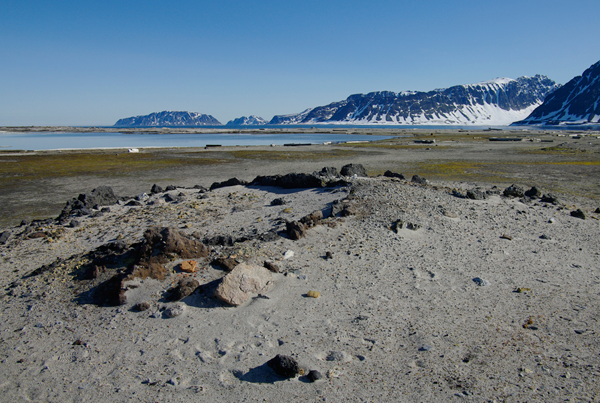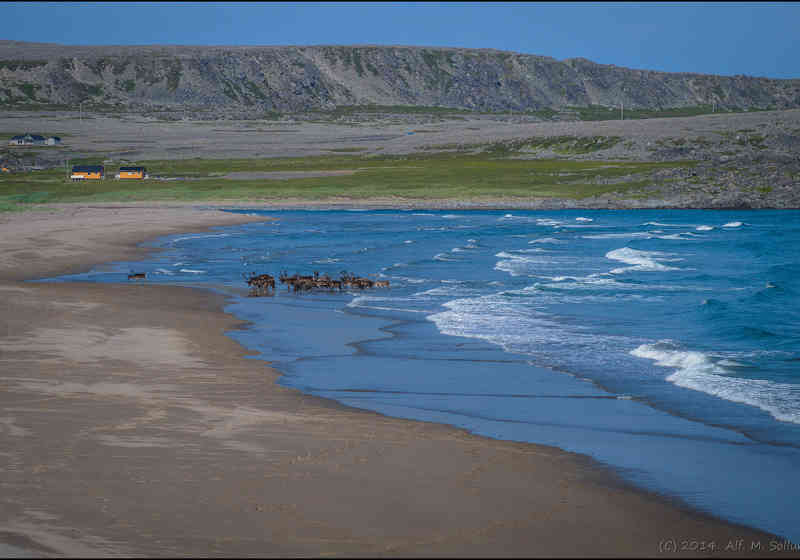The name of Svalbard derives from the year 1194 AD In Icelandic annals it is stated that "Svalbarði fundinn," but we do not know if this is a reference to what we now know as Svalbard. The first confirmed discovery of the archipelago was by Willem Barentsz in an attempt to find a northern sea route to Asia in 1596.
Hunting and mining
After Barentsz' discovery of Svalbard, there were constant reports of large numbers of whales, seals and walruses in the waters around the archipelago. Maritime nations like England and the Netherlands quickly became aware of the rich resources in the north, and in a short time large-scale European whaling operations developed in the area. Due to overexploitation, whaling around Spitsbergen eventually died out, but from 1715 Russians came here the year round to hunt polar bears and foxes for pelts. This hunting continued more or less continuously until the mid-1800s. At that time, Norwegians had also started this type of hunting, and the number of Norwegian hunting vessels and expeditions spending the winter here increased in the 1800s. In the latter half of the 1700s several scientific expeditions came to Spitsbergen, and surveying and research is still important on Svalbard.
Around 1900 the coal deposits on Svalbard attracted interest, and it was the Americans who first started large scale production. In 1916 private Norwegian companies entered mining and established Store Norske Spitsbergen Kullkompani and Kings Bay Kull Company. With mining it was important to have exclusive rights to land and mineral deposits, and a need arose for legislation and courts to resolve conflicts, for example between mining companies and workers.
The Svalbard Treaty
In the 1890s Norway had been encouraged by other nations to claim Svalbard, but the authorities were afraid of the costs it would entail. After the turn of the century there were several conferences on the sovereignty issue, but it was only at the Treaty of Versailles negotiations after World War I that agreement was achieved on the Svalbard Treaty. It was signed on 9 February 1920, but came into force with the Svalbard Act, on 14 August 1925.
The Svalbard Treaty ensures any person or company from the 40 states that have signed the treaty, the right to engage in business activities, hunting and fishing on the islands and in the waters around. The treaty has the following basic principles:
- Svalbard is part of the Kingdom of Norway, and it is Norway which adopts and enforces the laws that apply in the archipelago.
- Citizens and companies from all treaty countries have equal rights of access to and residence in Svalbard. They should be able to engage in fishing, hunting and all kinds of maritime, industrial, mining and trading business on equal terms.
- Taxes, fees and charges collected may only benefit Svalbard. Norway may not use its authority to ensure income beyond that which is needed for the administration of Svalbard.
- Svalbard must not be used for war purposes. Norwegian military presence on Svalbard is maintained at a very low level – essentially the Coast Guard. Foreign military presence is undesirable.
- The treaty also obliges Norway to take care of Svalbard's natural environment.
Link to the Svalbard Treaty (in Norwegian).
The Governor of Svalbard ensures the observance of the Svalbard Treaty, enforces Norwegian sovereignty and is the police and environmental authorities in the archipelago.
Environmental protection
The Svalbard Environmental Protection Act (Act of 15 June 2001 relating to the protection of the environment in Svalbard) lays down the environmental regulations for the archipelago. It contains rules on the protection of areas, species management (flora and fauna), cultural heritage, land use planning, pollution and waste, traffic and cabins. The Act includes a separate precautionary principle, where the essence is that we who visit or stay in the archipelago act such that we avoid that animals change their behaviour because of our presence.
There are seven national parks, six major nature reserves, 15 bird sanctuaries and one protected geotope area on Svalbard. 65% of the land area is protected.
Link to the Svalbard Environmental Protection Act (in Norwegian).
Administration
Longyearbyen local council (in Norwegian) was established 1 January 2002 and is responsible for infrastructure in Longyearbyen, social and land use planning, financial planning, trade and industry, statistics, development and coordination of social services directed at children, yound people and adults, child protection, social counselling, youth work, day care services and political secretariat.
Elections to the council are held as direct elections and take place in October every four years. The term of office is four years.
Facts about Svalbard
Settlements
Longyearbyen is the Norwegian administration centre and the largest settlement on Svalbard. The town has over the last 20 years gone from being a homogeneous society built around the Store Norske Spitsbergen Kullkompani, to become a more diverse society. The other settlements are Barentsburg (Russian), Sveagruva, Ny-Alesund, Hornsund and the two meteorological stations at Hopen and Bjørnøya.
Population
A total of about 2,400 people were resident on Svalbard as of 1 January 2011. In the Norwegian settlements, Longyearbyen and Ny-Ålesund, there are 2017 registered residents, 1,149 men and 868 women. Outside the Norwegian settlements, around 370 people live in the Russian settlement Barentsburg. In Hornsund, south on Spitsbergen, there is a Polish research station, manned by 7 people.
Industry
Mining is still the main economic activity on Svalbard, but also tourism and research/education have become important sectors. In 2009 more than 2.6 million tonnes of coal were extracted from the Norwegian mines. Mining and extraction had a turnover of over NOK 2 billion in 2009, which is about 51 per cent of the total turnover in the Norwegian settlements on Svalbard.

